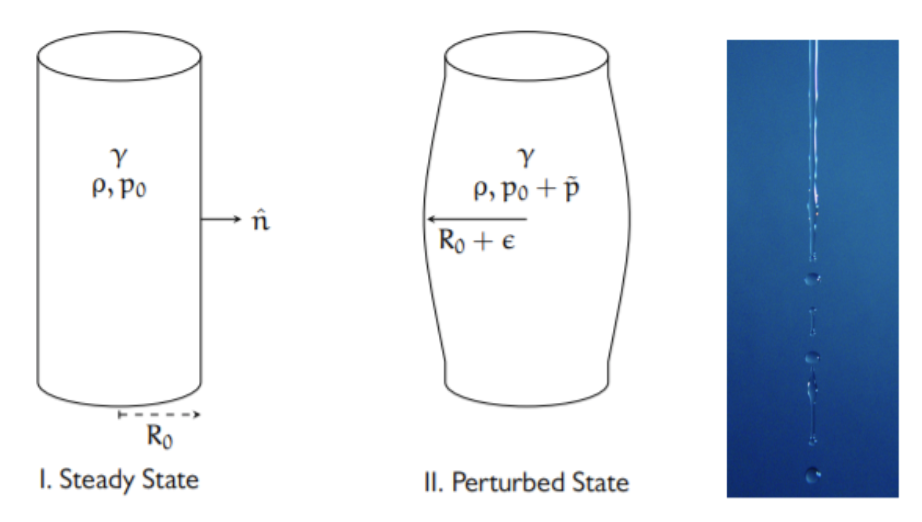|
By Boyuan Chen Have you ever noticed that, even if you turn the water all the way up—whether it’s in your shower or from a garden hose—it never travels far in a continuous stream before breaking into discontinuous drops? Or that, whether you go swimming or scuba diving, the air you exhale underwater always comes out in the form of bubbles? If so, you might wonder: Why can’t water or air travel normally in streams, like how they flow in a hose or through your trachea? Why must they always break off into smaller droplets or bubbles? Although the two phenomena seem similar, they are, in fact, very different physical processes, and we must discuss them separately for a deeper understanding. The breaking of water jets occurs mainly due to surface tension. Surface tension is the result of the greater affinity that water molecules have with themselves over air molecules; it is highly dependent on the curvature of the water-air interface (or, in other words, how “curvy” the water is). In the case of a perfectly cylindrical water stream, the curvature is uniform across the surface, so the surface tension is equal at all points. This means that if the water stream starts out undisturbed, surface tension would sustain the stream’s perfectly cylindrical shape, and it would not break off into droplets. Figure 1. I. perfectly cylindrical water stream II. Water stream under disturbance. III. Falling water column
Yet in the real world, disturbance is almost impossible to prevent. In fact, even as the water stream leaves the outlet, friction between the two can offset the water stream from its perfectly cylindrical geometry. This offset, however small, quickly breaks the surface tension equilibrium. Surface tension then starts to favor the growth of the bulge and the depletion of the neck (see Figure 1 above), until the water stream breaks into multiple droplets. Since this process occurs even with the slightest disturbance, the equilibrium of the cylindrical water stream is unstable, and hence the name “Rayleigh-Plateau instability”—also named after its discoverers, Lord Rayleigh and Joseph Plateau. On the other hand an intuitive way of explaining bubbling underwater is that the water can flow back into the air outlet due to its weight, thereby breaking off the airstream and creating the bubbles we observe. However, this explanation fails upon closer examination—for bubbles to occur at all, the air pressure at the outlet must be great enough to counteract the water pressure. This means that water pressure alone cannot fully account for air streams breaking into bubbles. Instead, this process is caused by another principle called Kelvin-Helmoltz instability—named after Lord Kelvin and Hermann von Helmholtz. This phenomenon is induced primarily by Bernoulli’s principle: the fact that fluids moving at higher speeds have lower static pressure. When an air jet is injected into still water, the air inside is moving at a faster rate than the surrounding water. And as with water streams in air, if the air jet is perfectly cylindrical, the pressure within is constant— and higher than in the surrounding water. However, if, again, a tiny perturbation occurs that contracts any section of the stream, the air inside the contracted section must move faster to allow the same amount of air flowing through the narrower passage. As stated in Bernoulli’s principle, the pressure within the contracted section of the air stream drops, which pulls the surrounding water inwards, further narrowing the air passage. Eventually, the two sides meet, and bubbles are pinched off from the air jet. From these two cases, we can see why the Rayleigh-Plateau and Kelvin-Helmholtz phenomena, although different in nature, share the name “instability.” Like balls balanced atop a hill, although they may appear to be in a state of equilibrium, any small disturbance can displace them from this balanced state and rapidly drive them downhill. And just as how it is much harder to place the ball back at its initial equilibrium, it is almost impossible to assemble water droplets and air bubbles back into a continuous stream. Certain delicate equilibria like these can be easily destroyed even by the tiniest offset in conditions.
0 Comments
Leave a Reply. |
Categories
All
Archives
April 2024
|


